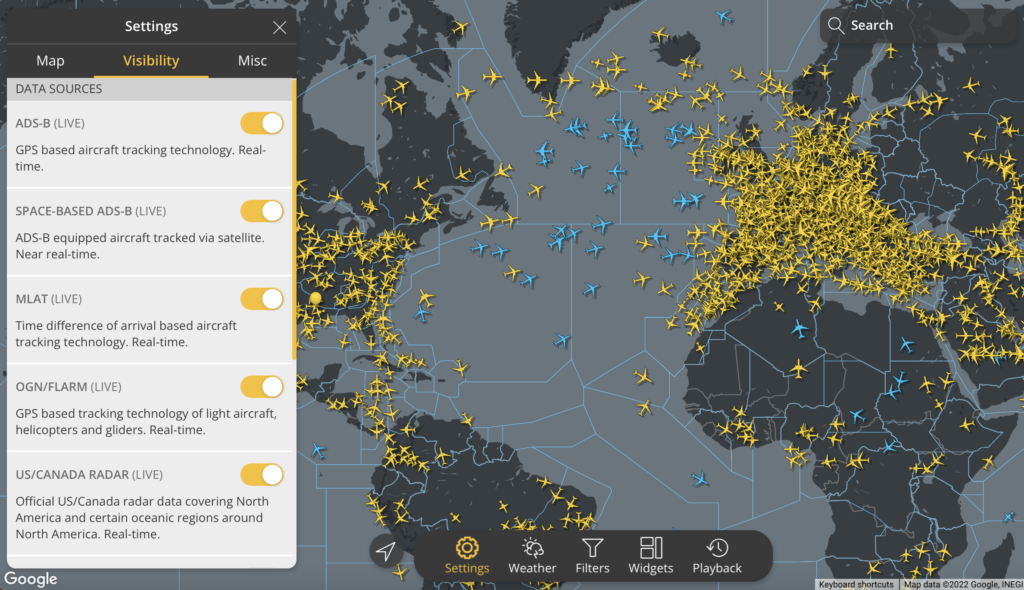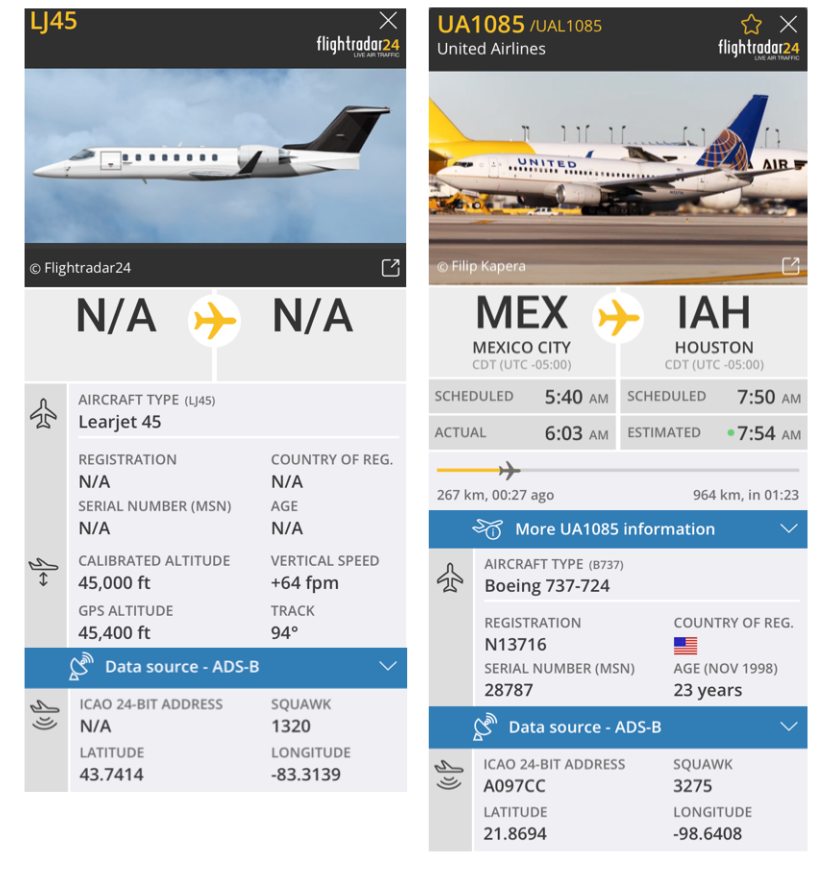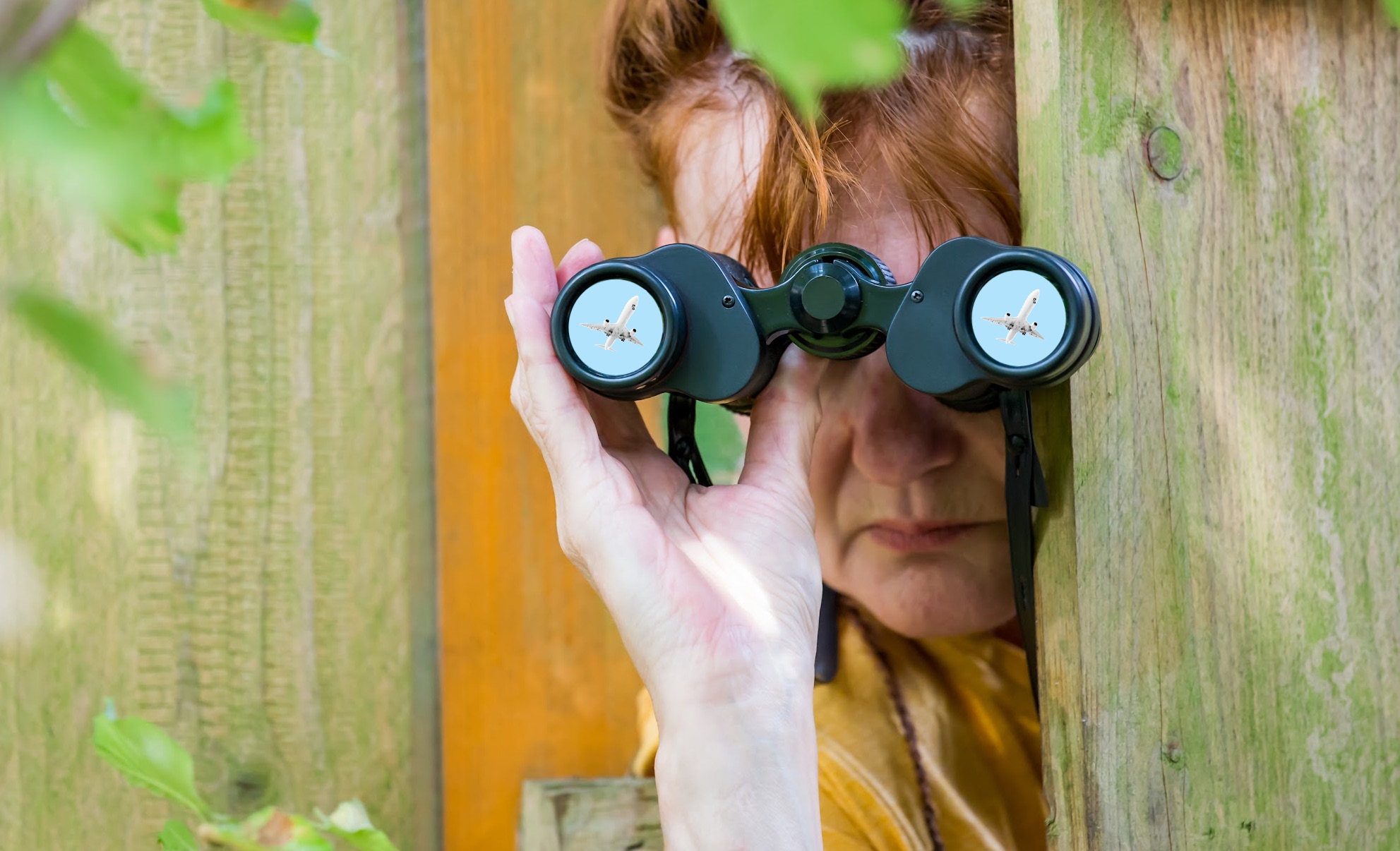ADS-B is quickly becoming mandated around the world – especially for IFR aircraft operating in busy controlled airspace at higher levels.
One of the major benefits of this is it provides ‘radar-like’ coverage where radar isn’t possible. They no longer have to wait many minutes for the next bit of info about where you are. Now aircraft can be tracked “as good as” live.
But this means you are trackable by, well, anyone, and it’s got some wondering whether this is an issue?
‘B’ equals Big Benefits.
The ‘B’ stands for broadcast and this is what makes this system so great. Your aircraft continually broadcasts its precise GPS position, along with other info through a Mode S transponder, to any receiver listening.
The biggest benefit seen so far is probably over the North Atlantic where ADS-B allows controllers to “see you” a lot better. Not literally see you, but receive info on where you are with a lot of accuracy and most importantly in a decent time frame (a mere snippet of a second).
The benefit is it allows for reduced separation.
But the Problem is also the ‘B.’
Anyone with the right ears (including near airports) can listen in, and see who you are, where you are and what you’re doing. You can literally buy ADS-B receivers on Ebay for less than a hundred dollars.
Take a look at FlightRadar and select the ‘ADS-B’ visibility on and suddenly the map fills up with many, many aircraft.

ADS-B on.
But this isn’t the main concern.
An aircraft’s ADS-B broadcast also contains a unique ICAO aircraft address – specific to every airplane and directly linked to the tail number. Which means folk can not only track an aircraft, but see a lot of information about it that the operator might not want any old Joe Bloggs seeing.
If someone knows your tail number, it is pretty easy to discover who owns the aircraft, and even the address of the person registered to it.
And this is the concern. ADS-B has created a privacy and potentially even a security issue.
How can we be less visible?
If you are flying in USA domestic airspace then the FAA have two systems you can sign up to.
First up LADD, which stands for ‘Limiting Aircraft Data Displayed’.
This came into place from the ‘2018 HR 254 FAA Reauthorization Bill: Section 566, Right to Privacy When Using Air Traffic Control System’ as a replacement for the old BARR (Block Aircraft Registry Request) system.
This scrubs your data out of the FAA SWIM feed – the place where commercial tracking providers get their info.
You have two levels of privacy you can opt for. One that removes it all so these sites get none of your data, and one that allows tracking providers to still track you (the airplane owner or operator might like this), but not publish the data to the general public.
Then there is PIA – the Privacy ICAO aircraft address program where you can request an ‘alternate, temporary ICAO aircraft address which will not be assigned to the owner in the Civil Aviation Registry’.

Member of LADD/PIA vs not.
Let’s Talk Hexes.
How does the PIA program work?
Well, your aircraft has a HEX code assigned to it – the unique 24-bit ICAO address. This is linked to the registration number which is registered in the Civil Aviation Registry, along with a bunch of private information about the aircraft and its owner.
So via the PIA system, you can get a different code assigned to your aircraft. One that isn’t linked to the tail number. This doesn’t stop your aircraft being tracked, but does mean not identifying data will be published because no-one can find it now.
These don’t solve the whole problem though.
There are several big limitations to know about.
Firstly, the FAA can only tell the commercial providers what to do with the data they receive from SWIM. Unfortunately, there are a lot of random trackers out there who have their own ways of tracking you, and the FAA has absolutely no power to stop them. Which is why getting the HEX changed is useful.
But, both LADD and PIA also only work in US domestic airspace which means as soon as you leave this and head into somewhere like the Deep Waters routes for example (which is Oceanic and managed but not owned by the US) then the FAA can no longer stipulate what is available and what isn’t.
The Atlantic, Pacific, off the East coast of the USA, and of course anywhere else in the world, still has the same problem.
Then there is the actual hassle of changing your ICAO HEX code. It has to be changed within a lot of your aircraft systems and involves a fairly lengthy maintenance process.
The NBAA are on it.
As usual, the very helpful NBAA are looking out for you already, and are working with the FAA to improve the timeframe it takes for your PIA request to be processed (currently within 60 days). And they are working to see if things like multiple codes could be an option.
There is also discussion as to how the programs can be extended into non-US domestic airspace.
So if you want to register, how can you?
All of it can be done via the FAA website.
File your LADD request here.
Head to this page for more info on the PIA.
If you want some more info?
The NBAA did an excellent podcast on this not so long ago which you can listen to here.
There is a good article on it here as well courtesy of ‘Plane and Pilot’.
More on the topic:
- More: US FAA: Swift Move to Improve Flight Tracking Privacy
- More: Canada Mandates ADS-B in Class A Airspace
- More: ADS-B Mandates in 2023
- More: Cloaking Devices: The ADS-B Privacy Issue
- More: Canada: To ADS-B or not to ADS-B, that is (no longer) the question
More reading:
- Latest: Teterboro: RIP the RUUDY SIX
- Latest: 400% increase in GPS Spoofing; Workgroup established
- Latest: GPS Spoofing WorkGroup 2024
- Safe Airspace: Risk Database
- Weekly Ops Bulletin: Subscribe
- Membership plans: Why join OPSGROUP?











 Get the famous weekly
Get the famous weekly 






If you do not want to be visible in public. Then you should not move around in public. Stay at home if you have something to hide. We have to think about what kind of people will try to hide the movement of their airplane. I guess its not Jack Flyalot with his Cessna 172.
Military related flights, people with political status, wealthy/famous people who could be targeted… It isn’t about hiding the movement of the airplane, it is more about privacy/security. The aircraft are still visible, but where it is going/who owns it etc can be protected better.
Of course a huge number of USA registered aircraft are not in fact registered to the owners anyway, but to trusts which are presumably a legal way (in the USA anyway) to hide the real owners of an aircraft. Try searching the FAA database to see how many aircraft the Bank of Utah ‘operate’. As a former ATC controller at a small regional airport in Europe I occasionally needed to try and trace an aircraft owner and often in the case of USA registered ones it was impossible.
Hi
Looks pretty good. How do we handle this with European tail numbers?
Also see https://helipaddy.com/how-to-go-anonymous-on-flightradar24/
The PIA is not effective in blocking at aircraft from the general public. It adds a layer which is just slightly harder to penetrate. See @JxckSweeney on Twitter and @Corporate_Jets